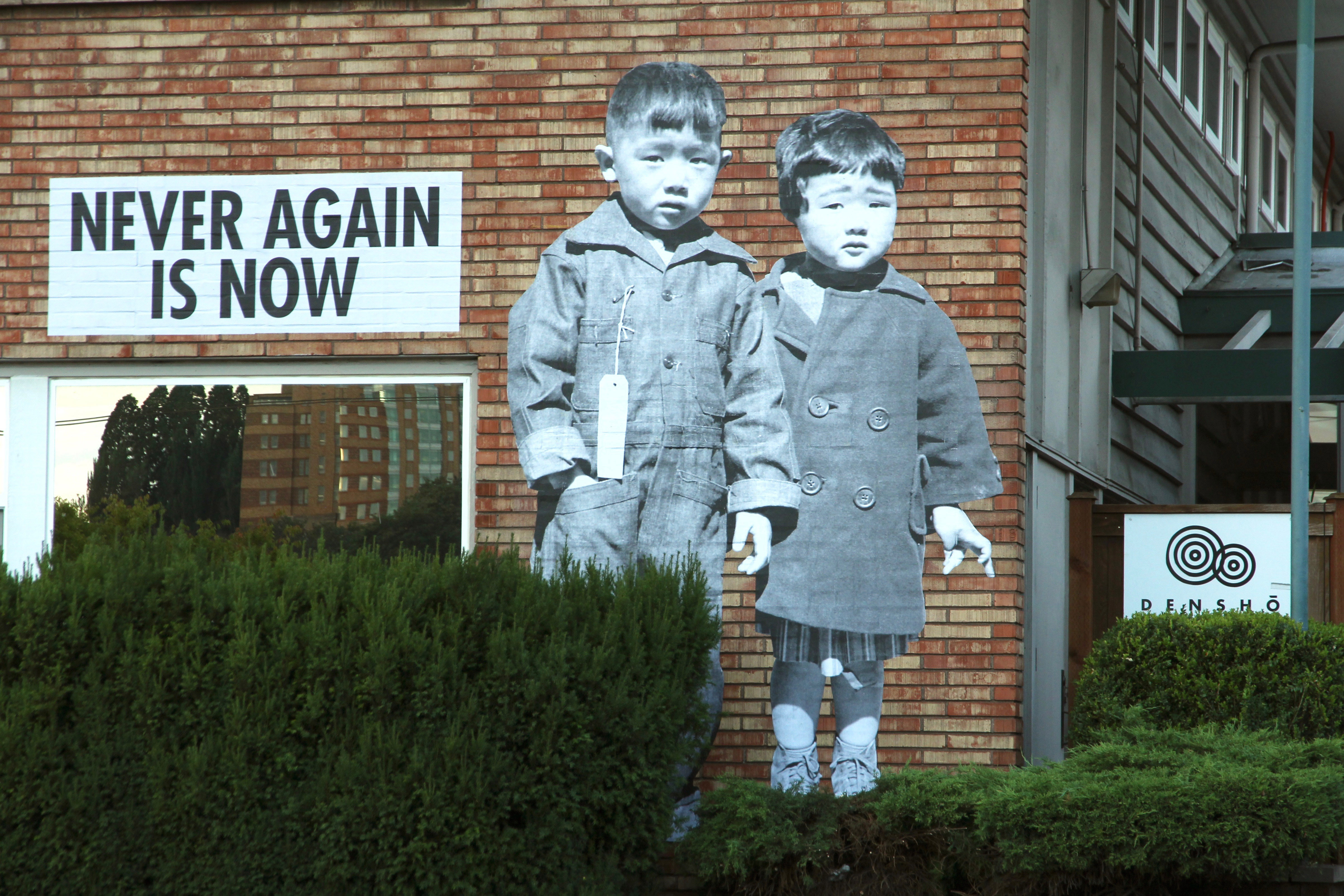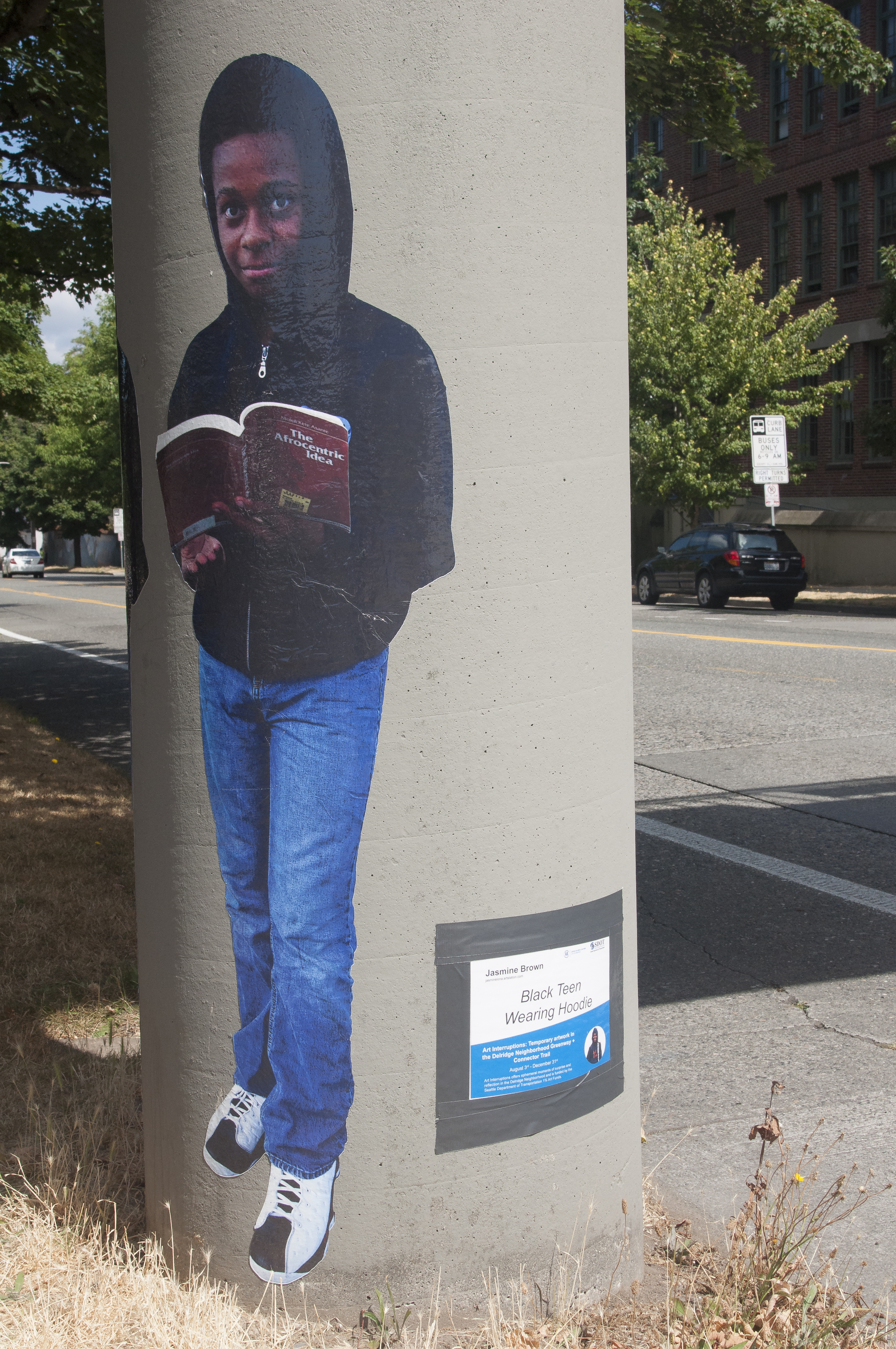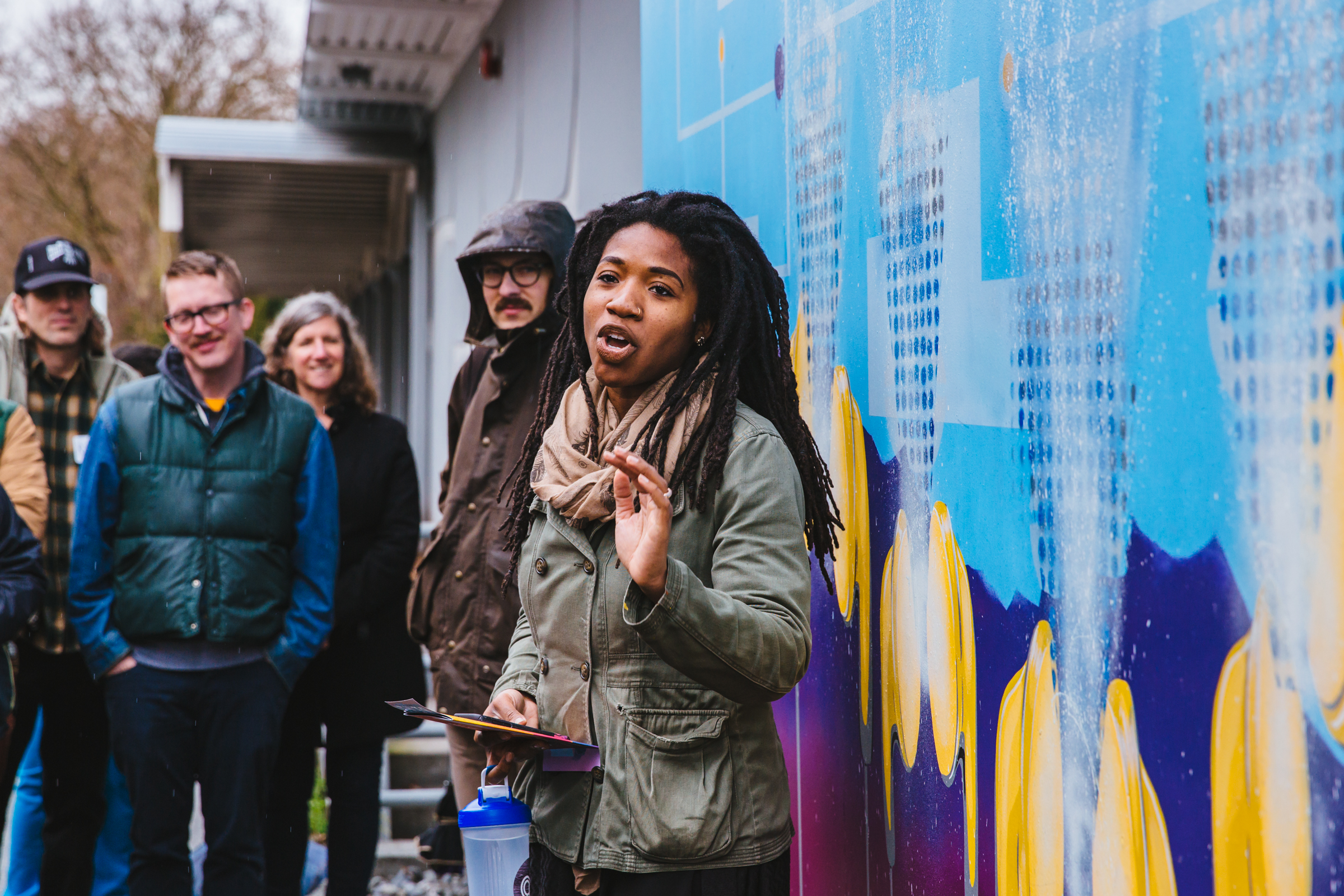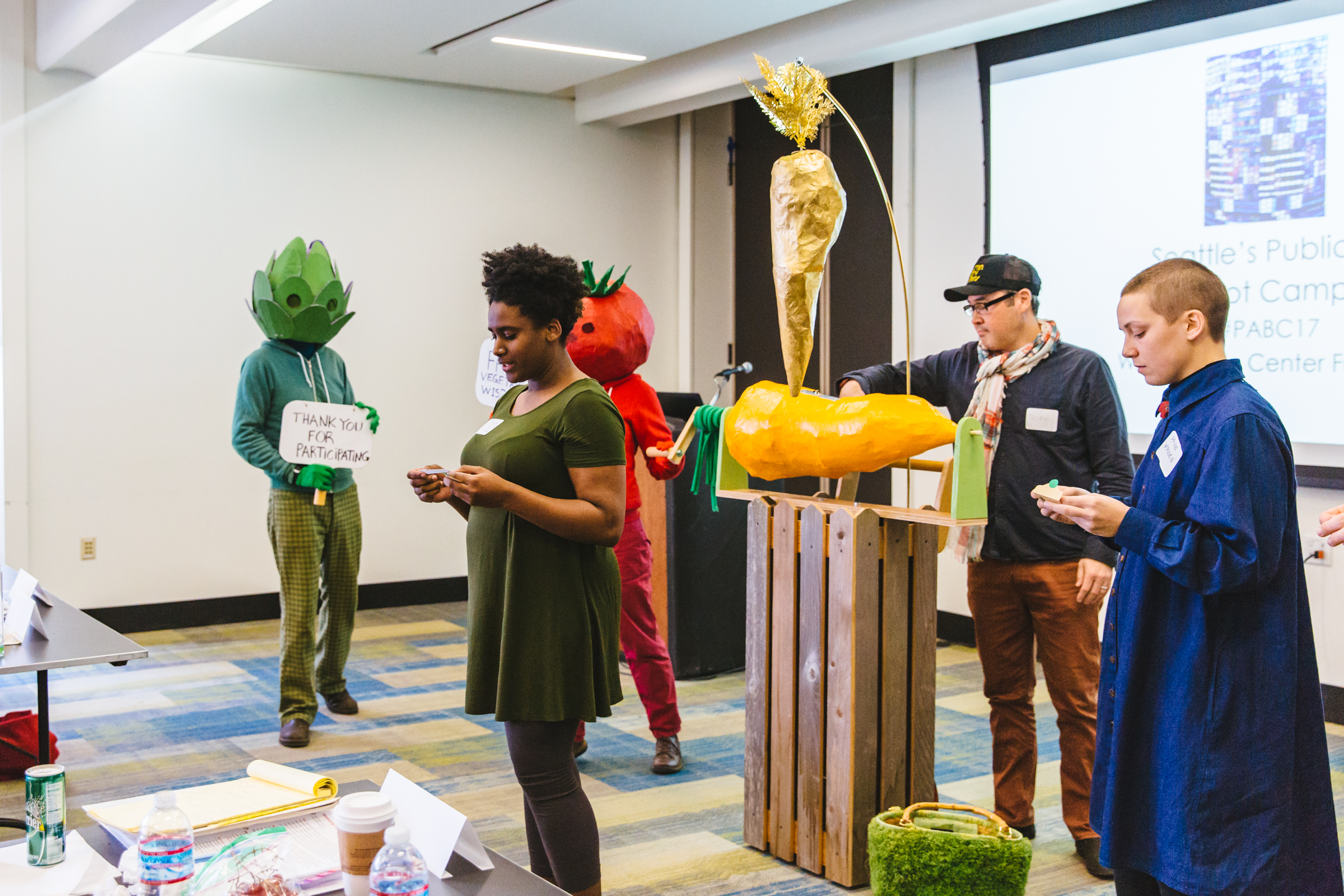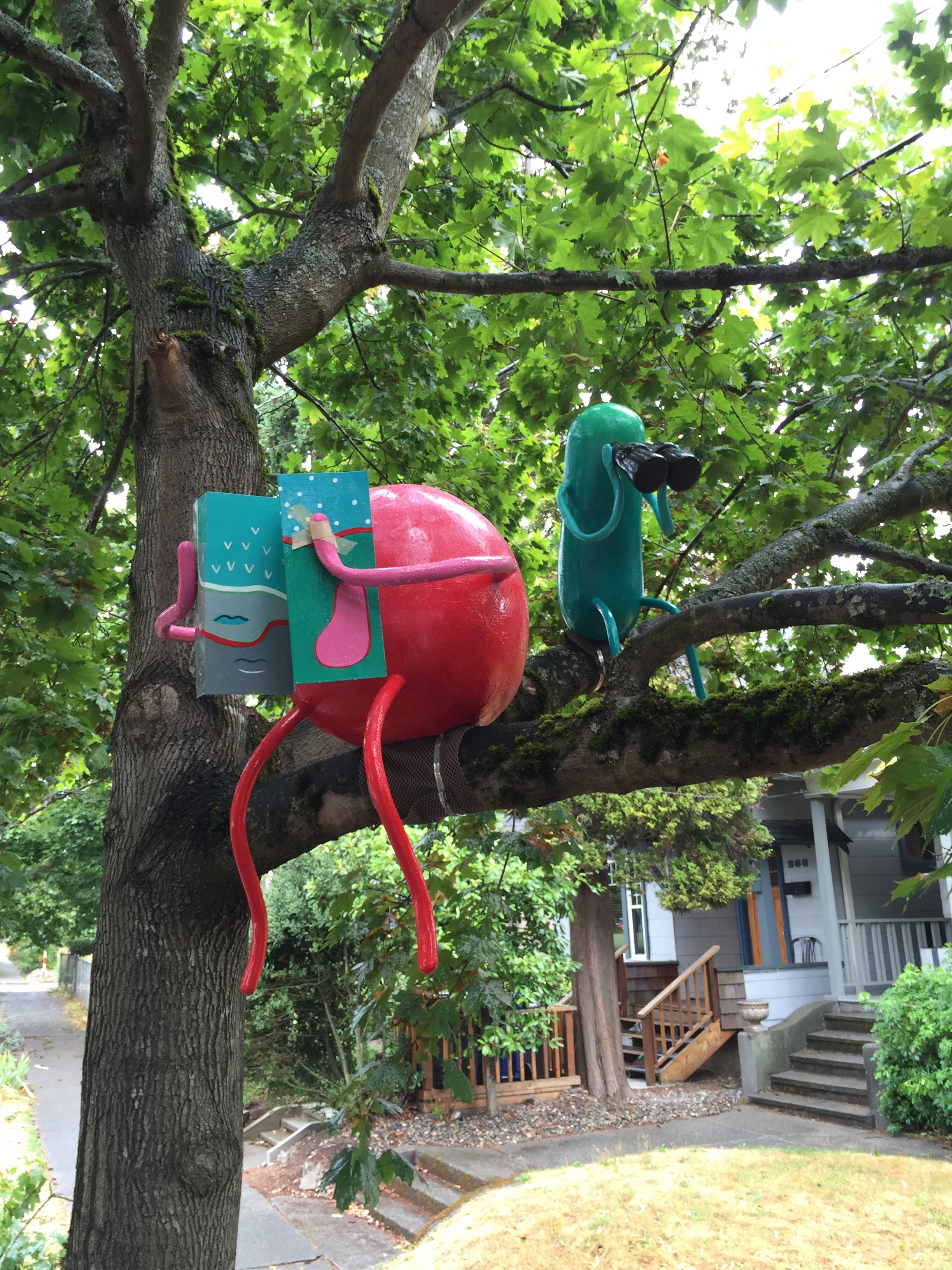Building Racial Equity in Public Art Funding
A Seattle Story
As a society and country, we continue to struggle with the legacy of racism and the structural barriers that have been created to privilege some while oppressing others. Building racial equity and social justice takes dedication, inspiration, honesty, and a willingness to admit and learn from our failures. There are no foolproof guides or programs, nor one right path to achieving racial equity. It becomes a daily practice to question norms and work to make change.
The Seattle Office of Arts & Culture (ARTS) is a city department working within a large bureaucracy, but we can use that to our advantage, and we have. We are small and nimble, and we are finding that we can effect change through small efforts that yield positive results without entering the political playing field. We are working toward dismantling institutional racism from inside, one decision at a time, but also through new programs and initiatives, including our capacity-building program Public Art Boot Camp.
ARTS manages the city’s public art program, cultural partnerships grant programs, the Langston Hughes Performing Arts Institute, and The Creative Advantage initiative in the effort to foster a city driven by creativity that provides the opportunity for everyone to engage in diverse arts and cultural experiences. The office is supported by the sixteen-member Seattle Arts Commission, citizen volunteers appointed by the mayor and city council.
In 2005, the City of Seattle introduced the Race and Social Justice Initiative (RSJI), which requires that all city departments review their processes and work to become more racially equitable for the city’s residents. In 2016, the ARTS published our commitment to racial equity, pledging to seek new solutions that use arts as a strategy to drive not only our office but the city as a whole toward racial equity and social justice. We promised to continue to break barriers and build arts-integrated tools that challenge the status quo and push us toward the inclusive society we envision. We work toward our vision by addressing and working to eliminate institutional racism throughout our office and in all our programs, policies, and practices.
At ARTS, in addition to a number of initiatives including arts education and cultural space, we fund arts and cultural organizations, community groups, and individual artists through our grant programs, and we also fund artists directly through commissioned public artworks. In fact, similar to other municipal arts and culture departments throughout the country, the mainstay programs of our office are public art and grants. In 2017, we invested $3 million through our grant programs to support more than 375 artists and cultural organizations, resulting in over 3,600 performances, events, and exhibit days. An estimated 1.7 million people participated in programs funded by ARTS. In addition, through ARTISTS UP, a collaborative effort between 4Culture, our King County partner agency; ArtsWA, Washington State’s arts agency; and ARTS, we work to improve and expand capacity, networks, and opportunities for all artists in our region, with a specific focus on artists of color, artists with disabilities, and artists from other countries or new to our area. We focus on raising awareness about artists’ needs, while developing and delivering new programs and assessing and updating historic programs, as individual and allied agencies, that work better for artists.
In addition to grantmaking, our public art program invested more than $2.5 million in artists and fabricators for art in our city in 2017. Seattle’s public art program allocates 1 percent of eligible city capital improvement project funds for the commission, purchase, and installation of artworks in a variety of settings. Public art began with a mission to reflect our history, society, and place and continues to do so. Public art should reflect our community values, especially racial equity and social justice, which also means that public artists need to be as diverse as the communities we serve.
Just as important is that we remove barriers and address structural racism in our public art program, as we do in our grantmaking. As much as local and regional arts and cultural organizations and artists reflect our community, public art physically represents our history and society and defines the space and community in which we reside. Cities are complex ecosystems that thrive when all sectors of the creative economy are working together to address our needs, nurture our natures, and advance racial equity.
Municipal funding, and in particular the 1 percent for art programs, is inherently political. When funding is allocated from city capital improvement projects, structural and systematic inequities embedded in those projects are transferred to the public art program. We require leadership from the top to shift systems in government to be more racially equitable. However, without commitment from administrators on every level, from directors to project leads to coordinators, real change cannot be achieved. ARTS’ director, Randy Engstrom, has charged the office to lead with racial equity in all our programs. This bold direction citywide and within department-level leadership enabled the public art team to create a capacity-building program to directly address the low numbers of public art commissions awarded to people of color.
To make change, we must acknowledge the problem. A tenet of racial equity trainings is to uncover and acknowledge the implicit biases that show up in us as individuals and in our programs and policies. Creating a program that intentionally serves artists from underrepresented and underinvested communities not only acknowledges historic and current inequities, it directly effects change.
Taking a closer look at public art means identifying who is creating the artworks, whose voice is heard and uplifted, what barriers exist to artists of color, and the increasingly diverse audience for which it is created. Public art should express our community values, which means that artists and administrators need to nurture diverse voices outside of the current art world structure.
In 2003, ARTS invested in expanding the field of public artists by creating the Emerging Public Artist Program, a competitive training cohort. More than 160 artists applied, and 27 artists from Washington State were selected. The program lasted six weeks and explored the business fundamentals of public art for artists. Enhancing the lessons were two all-day bus tours to see public art in Seattle and to meet some of the artists on-site to hear about their projects. These activities provided participants with context and valuable firsthand knowledge. The curriculum was based on key topics, including defining public art and how it differs from studio practice, answering public calls for artists, contract basics, working with architects and community stakeholders, concept and final proposals, approvals, design and fabrication issues, maintenance, insurance, and more. Instructors included experienced public artists, commercial fabricators, public art program managers, and arts administrative professionals, all of whom were paid for their lesson preparations and presentations.
The program was designed to create a cohort, a built-in network for artists through communal dinners and tours. After the training was completed, participating artists were the only ones eligible to apply for temporary and permanent projects that included community centers and parks. Some of the artist presenters were selected to be mentors to help troubleshoot issues with individual artists’ projects and were paid on an hourly basis.
Fifteen of the twenty-seven artists completed their first public artworks over the next few years. Some artists transitioned into the realm of public art, as it became their passion, and they completed more public artworks. Others realized that the time, collaborations, and skills required were better spent in studios or classrooms. All agreed that the knowledge and confidence gained through the Emerging Public Artist Program enhanced their careers in some way. We know that at least nine of the twenty-seven (33 percent) from the 2003 class of emerging artists have gone on to be active in the public art field today.
In 2015, in response to the need to increase participation of artists of color in public art projects, we updated the Emerging Public Artist Program, and it transformed into the Public Art Boot Camp. The program is designed to advance racial equity by centering ALAANA (African, Latine, Asian, Arab, and Native American) artists or artists of color and providing them the information and experience they need to enter the niche world of public art. The program was open only to artists who had not received a temporary or permanent public art commission: an artwork created by the artist at the request of an entity (public agency, private business, corporation, or individual) for more than $5,000 that was or is displayed in a public location.
Public Art Boot Camp was designed as a cohort model program. Participants commit to two days of training that includes presentations by working artists, mentor sessions with public art administrators, handouts, and homework. They then can apply for a public art project. This opportunity is vitally important to the program because it takes the participants from the realm of theory into practice. We recognized the need to craft a culturally relevant and responsive curriculum. ARTS hired presenters that were diverse in race, age, and sexual orientation. Being a cohort model, the program needed to create space for networking and community building. The most consistent feedback we received from participants was that the most valuable part of the program was meeting and networking with other artists.
Here are a few tips to creating your own Boot Camp:
- Allocate six to twelve months to plan, which includes the application process and collaboration with potential partners.
- Allocate budget for staff time and paying presenters.
- Be conscientious, inclusive, and deliberate about whom you invite as artist presenters. They should be smart, clear, humorous, helpful, relatable, and diverse in age, race, sex, media, and interests.
- Select presenters who are people of color (POC) whenever possible — people want to see others who look like them.
- Give presenting artists an overview of your goals for expanding the field for ALAANA or POC artists and other underserved populations.
- Pay everyone, and keep a careful budget.
- Be clear about expectations for everyone.
- Ensure you have enough staff capacity. Plan your time and then triple it.
- Create a curriculum binder.
- Incorporate interactive activities.
- Allow time for participants to relax during lunch and breaks.
- Include a public art tour.
- Give homework: a “real” public art project call to artists.
- Create a pipeline. If possible, have opportunities for temporary art projects available for participants to apply for immediately after completing Boot Camp. (We had fourteen immediate opportunities).
Here is what participant Blanca Santander said about her experience:
My training in the Public Art Bootcamp has been key to my winning three grants in the last year. One grant with King County/4Culture and two with Seattle Office of Art & Culture and Seattle Parks & Recreation. My first temporary public art installation “Park Your Thoughts” will be at Ballard Commons in just a few weeks. Kudos to the Boot Camp program for strengthening my résumé and filling in all the gaps in my training that needed filling in order for me to advance my artist career to the next level. I refer often to the Boot Camp experience as a defining period in my career to set me on the course to success as an artist. I have building blocks today that I did not have before, and the Public Art Bootcamp helped create those opportunities for me.
Artists who participated in Public Art Boot Camp have now received commissions at other local agencies, therefore broadening the public art sector. Most importantly, when diverse artists work in the public realm, people see themselves reflected in public space in a way that only happens with robust commissioning of artists of color and other underrepresented communities. Artists of color have histories and a visual vernacular that are unique to their experience. Cities benefit from a richer visual environment by including everyone’s narrative. The biggest gain is that culturally relevant art is meaningful to more people.
In addition to capacity-building programs like Boot Camp we know that we must make systems change to bring new voices into the field.
A few things we have codified in our calls for artists include the following:
- Adding the ability to submit an audio or video statement instead of a written statement. This option allows for a wider range of applicants and does not rely on an applicant’s ability to write for a panel, potentially evening the playing field in the application process.
- Not requiring résumés and asking for biographies instead. This helps artists who have not been trained in institutions nor had a lot of gallery experience to be able describe their practice without panelists looking at pedigree.
- Breaking deliverables into smaller amounts. We know that access to financial capital is a huge barrier to working in the field, so our project managers break deliverables into smaller amounts. This allows artists to get paid for their work on a regular and manageable schedule and reduces the burden of costs they are carrying.
- Offering application workshops. We offer in-person and online application workshops so that artists have access to project managers who can provide meaningful information that better prepares them to apply for each call.
- Requiring fewer work samples. Access to high-quality documentation of their artwork is a barrier for many artists. We have received feedback that requiring twenty images is a hardship, so we have lowered our requirement to eight images.
- Providing more temporary art opportunities. Emerging artists are often caught in a catch-22: an artist must have received a public art commission to be eligible for a commission. Temporary art opportunities typically have a lower bar for selection and provide artists with the real-world experience they need to compete for and win other, larger, and longer-term public art commissions.
Now is the time to implement lasting and concrete solutions to address racial equity in all our programs and policies. The distribution of any funds that are invested in communities should be made through a race and social justice lens. From grantmaking for public art to consultant contracts and arts education investments, we need to ensure we are making changes both large and small that can aid us in achieving our vision of a racially equitable society.
Investing in local artists and especially artists of color is one of the most effective ways to diversify the public art field and the broader creative economy we all rely on. Capacity building can be as simple as offering detailed feedback to applicants, providing implicit bias training to panelists, and consciously engaging panelists of color, to running a two-day intensive training for emerging artists, and providing different types of artwork commissions to expand their reach in the public realm. Investing in artists can take on many different forms, and funding limitations should not be barriers to providing meaningful professional development that drives our future.
For more than forty years, our public art program has integrated artworks and artists’ ideas into a variety of public settings, advancing Seattle’s reputation as a cultural center for innovation and creativity. There are now more than four hundred permanently sited and integrated artworks and nearly three thousand in the Civic Art Collection. By providing opportunities for individuals to encounter art in parks, libraries, and community centers and on roadways, bridges, and other public venues, we simultaneously enrich citizens’ daily lives and give voice to artists.
Marcia Iwasaki is a public art project manager for the Seattle Office of Arts & Culture, overseeing projects where artists and communities realize their artistic visions. For over two decades, she has managed projects for community centers, fire stations, city utilities, parks, and transportation sites and overseen artist residencies, temporary art, and artist rosters. Iwasaki and colleague Elisheba Johnson codeveloped Public Art Boot Camp, an intensive two-day training program designed to increase diversity in public art by providing artists from diverse backgrounds the information and opportunity to transition from studio to public art.
Elisheba Johnson has worked as a public art project manager for the Seattle Office of Arts & Culture since 2013. Previously she was the owner of Faire Gallery Café, a multiuse art space that hosted art exhibitions, music shows, poetry readings, and creative gatherings.
Erika Lindsay is a communications manager for the Seattle Office of Arts & Culture. Before joining ARTS, she worked as a media and community relations professional at the Smithsonian Institution, the Seattle Art Museum, and the Frye Art Museum.

